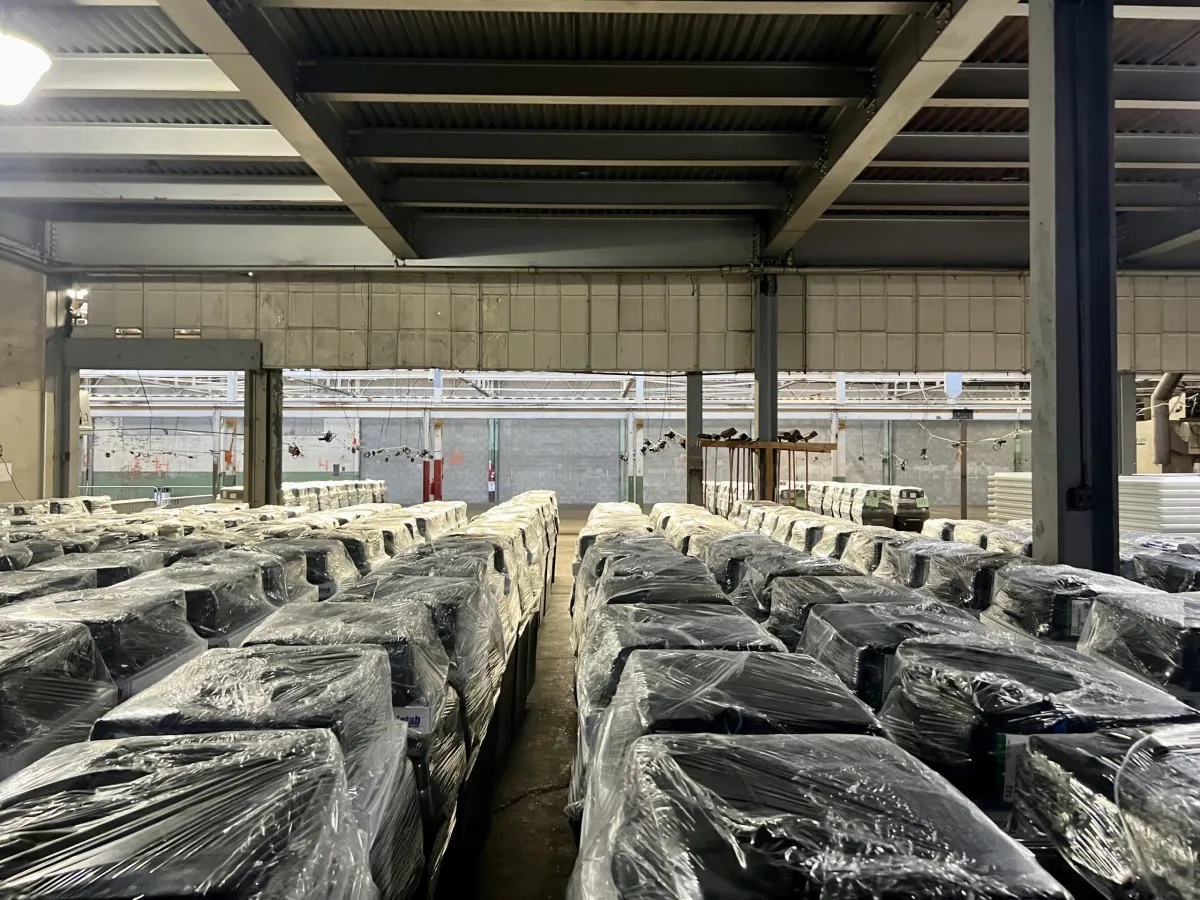Ballot scanners at Allegheny County’s election warehouse, seen during a media tour on Oct. 30, 2024. (Photo by Charlie Wolfson/PublicSource)
“PublicSource is an independent nonprofit newsroom serving the Pittsburgh region. Sign up for our free newsletters.”
Where your ballot is scanned depends on how you cast it.
In Allegheny County, votes cast in person on Election Day are scanned at local voting precincts, and mail-in ballots are scanned at a central warehouse run by county employees.
The counting process begins at 7 a.m. on Election Day when county employees begin the process of opening and scanning more than 200,000 mail-in ballots at a county-run warehouse. This warehouse has been under guard around the clock since ballots arrived, and a county official said there will be a large police presence inside and outside the building on Election Day.
Mail-in ballot envelopes are checked twice for a proper date and signature before being opened and then the ballots within are fed into high-speed scanners that can process 50,000 sheets per hour. The scanners load results onto two USB drives and the ballots themselves are kept as a backup.
Since the scanners are in the same building as the election night reporting network, the county is usually able to upload the results from these ballots almost immediately after polls close.

There are 1,327 voting precincts in Allegheny County, spread among 766 locations (some locations house multiple precincts). Each precinct has a ballot scanner, a machine to help people with disabilities mark ballots, and enough ballots for the voters who reside there.
Voters mark paper ballots with pens and feed the marked ballots into a scanner, which tallies the votes for each contest. The ballots are kept in a secure box inside the scanner to serve as a backup to the tally.
After polls close at 8 p.m., poll workers remove two USB drives from the scanner containing the results for that precinct and deliver them to Elections Division officials posted at one of eight drop-off sites. One drive is considered unofficial and is uploaded to the internet that night so the public can see the results quickly. The other, considered official, is loaded into the county’s closed network which never connects to the internet. The drives from the mail-in ballot scanners are handled the same way.
The ballot scanners also print strips of paper showing the results for the relevant precinct; one is posted outside the polling place and copies are also kept by poll workers and county officials.
In all, precinct results are recorded four different ways: The set of paper ballots, the two USB drives and the printouts.
As USB drives from precincts are delivered , results will be uploaded to the county website and news organizations like the Associated Press can begin to declare winners. PublicSource relies on Associated Press determinations to report election winners.
While it’s likely that all mail-in ballots and more than 90% of Election Day ballots in Allegheny County will be counted and reported by Wednesday morning, the counting and certification process will be far from finished.
On Friday, the official Return Board will be sworn in, and it will verify that the number of people who signed into each precinct matches the number of votes at each. The board will also examine provisional ballots and determine which ones should be fully or partially counted.
The county Board of Elections is tentatively scheduled to certify the election results on Nov. 25.
Charlie Wolfson is PublicSource’s local government reporter. He can be reached at charlie@publicsource.org.
This article first appeared on PublicSource and is republished here under a Creative Commons license.